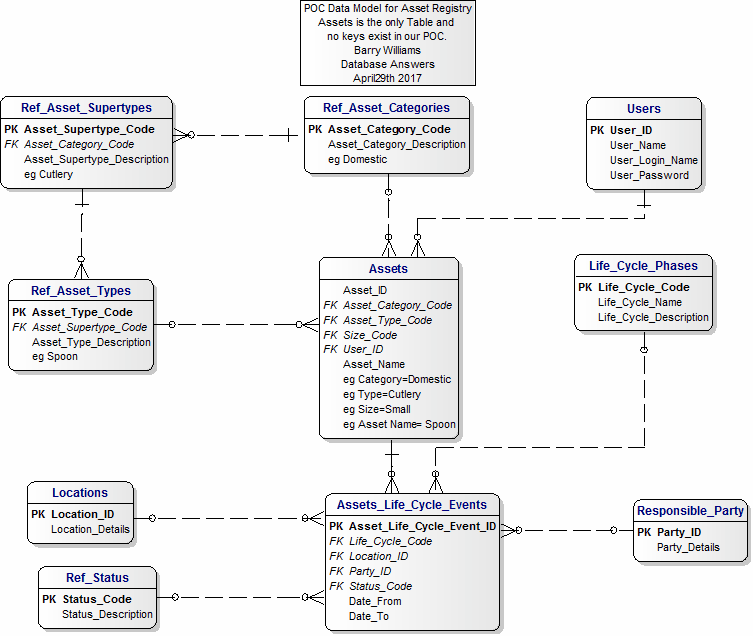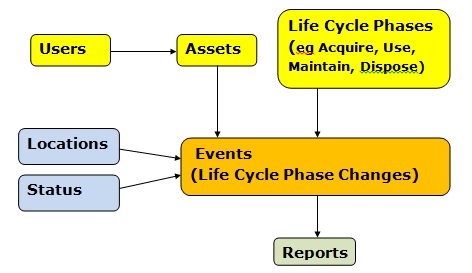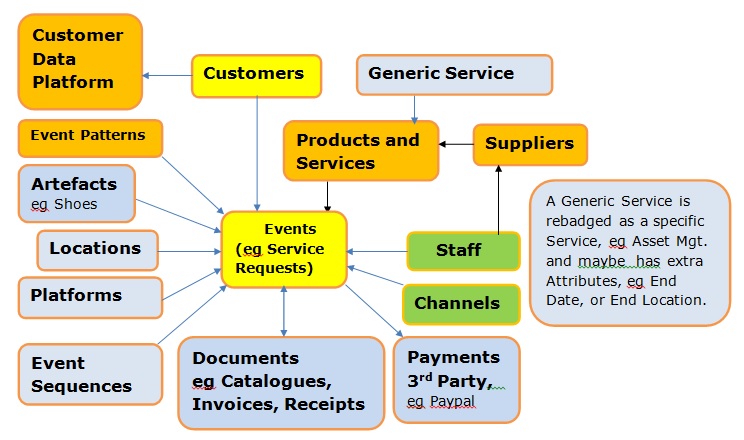Step 8 - Define the KPI Tables
Step 7 - Define the Data Mart Model This is typically used to store KPI Data.
Step 6 - Define POC Tables Our Asset Management Service is primarily planned for Utilities including Electricity, Gas, Water and Transport, such as Airport, and Rail.

Corresponding Tables

Step 3 - Define the Asset Register Conceptual Business Data Model
Step 2 - Define Sample Data A. Asset Hierarchy :- 1. Category, eg Domestic 2. Supertype, eg Cutlery 3. Type, eg Spoon B. Lifecycle Phases :- These can be common to all types of Assets and typically include :- 1. Acquire 2. Use 3. Maintain 4. Dispose C. Status :- 1. Needs Maintenance 2. OK 3. Ready for Disposal
Step 1 - Start with our Canonical Data Model